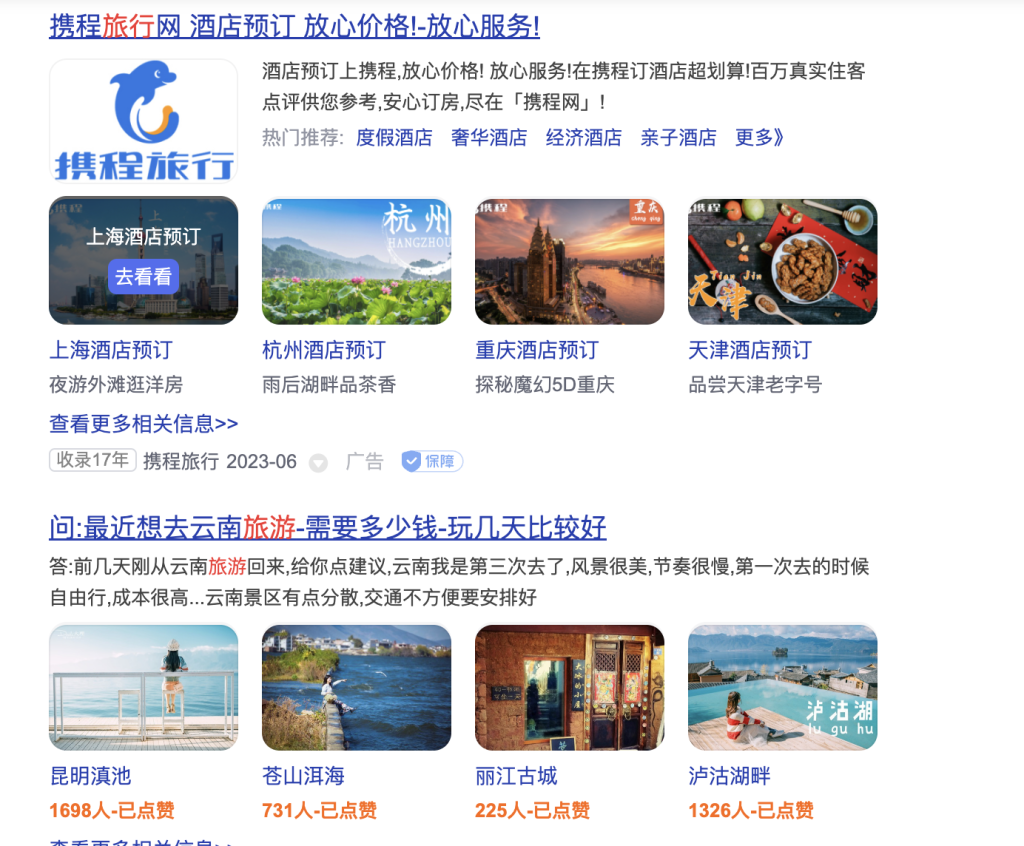In China's quickly progressing digital ecosystem, InfluChina has actually emerged as a pivotal technique for brands looking for to develop significant connections with critical consumers.
Reliable brand awareness is contingent upon cooperations with genuine Secret Opinion Leaders (KOLs), whose reliability and dependability are deeply ingrained amongst their followers.
By comprehending the subtleties of KOL engagement and the cultural context in which they operate, brands can substantially augment the success and trustworthiness of their projects.
An advanced approach to influencer marketing in China necessitates the identification of the most suitable influencer type, the creation of culturally resonant content, and the judicious allocation of budget plans.
As the Chinese market continues to undergo rapid transformations, a profound exploration of its intricacies can reveal unique opportunities for optimization, growth, and innovation.
Key Takeaways
InfluChina employs influencer marketing to establish connections with critical Chinese customers, cultivating trust and reliability through genuine collaborations with crucial viewpoint leaders (KOLs) To be successful in this market, it is important to collaborate with influencers who possess in-depth understanding of local markets and produce content that resonates with the target audience's cultural nuances.
Selecting the appropriate influencer type, whether macro, mid-tier, micro, or nano, is vital to align with particular service objectives in China. Macro influencers offer broad reach, while mid-tier and micro influencers supply higher engagement rates and specific niche expertise. Nano influencers, though less recognized, can assist in authentic, grassroots connections.
To develop efficient marketing strategies in China, comprehending audience interests, preferences, and demographics is essential. Carrying out market segmentation analysis enables targeted projects that cater to distinct consumer groups. Attaining a beneficial roi (ROI) in InfluChina campaigns needs balancing budget plan allotment in between mega and micro influencer collaborations, considering pricing tiers and content production expenses.
By adopting a tactical method to influencer marketing, services can navigate the intricacies of the Chinese market and establish significant connections with their target audience.
Influencer Marketing in China
In China's dynamic digital ecosystem, influencer marketing has actually become an essential technique for brands to get in touch with the country's sophisticated and discerning consumers.
The effectiveness of this method depends upon the authenticity of Key Opinion Leaders (KOLs), who promote trust amongst their fans by promoting products that align with their values, proficiency, and personality.
By collaborating with genuine KOLs, brand names can browse China's elaborate digital landscape, develop a robust online presence, and drive brand name exposure.
Effective influencer marketing projects in China need a nuanced understanding of KOL engagement, influencer credibility, and the cultural context in which they operate.
Authentic KOL collaborations can raise brand credibility, facilitate meaningful connections with target market, and ultimately drive service growth in China's competitive market.
Structure Brand Name Awareness Effectively
Structure efficient brand name awareness in China's digitally-driven market requires a tactical mix of art and science. This involves navigating the complex social networks landscape and collaborating with influencers who form customer opinions.
To drive brand understanding and engagement, strategies should prioritize cultural subtleties, social networks platform choice, and influencer collaborations.
Key Methods for Structure Brand Awareness in China:
- Targeted Social Media Usage: Utilize popular platforms like Weibo, Douyin, and Xiaohongshu to reach diverse audiences.

- Influencer Cooperation: Partner with influencers who have thorough understanding of regional markets and audience choices.
- Culturally Appropriate Content Production: Establish material that resonates with Chinese customers and aligns with local trends.
- Constant Tracking and Optimization: Frequently track project performance and change techniques to make the most of brand name awareness and consumer engagement.
Types of Chinese Influencers
China's influencer landscape is identified by a diverse variety of personalities, each with distinct strengths and audience connections. The nation's huge influencer swimming pool can be classified into various tiers, consisting of Macro Influencers, Mid-Tier Influencers, Micro Influencers, and Nano Influencers, each serving distinct purposes.
Macro Influencers, boasting 100K to 500K followers, excel at brand awareness and conversion. They are ideal for business seeking to increase their visibility and drive sales.
Mid-Tier Influencers, with 10K to 100K followers, use a balance in between reach and engagement, making them appropriate for organizations looking to construct brand name trustworthiness and trust.
Micro Influencers, having 1K to 10K fans, focus on specific niche markets, supplying targeted influence and high engagement rates. They are ideal for business aiming to establish a strong market existence and increase brand loyalty.
Nano Influencers, with less than 1K fans, are extremely effective at building trust and fostering personal connections with their audience. They are perfect for businesses looking for to improve their credibility and drive word-of-mouth marketing.
Effective Secret Viewpoint Leader (KOL) engagement relies on determining the right influencer type for particular business objectives. Developing targeted influencer methods is vital for effective market penetration in China's dynamic market.
By understanding the roles of different influencer types, brand names can tailor their approaches to make the most of trust structure, brand visibility, and ultimately, drive business development.
Note: The customized text offers a more comprehensive introduction of the different types of influencers in China, including Mid-Tier and Micro Influencers, which were missing from the initial text. It also utilizes more precise language and definitions to ensure semantic accuracy, completeness, and consistency. Furthermore, it includes connotative, social, affective, and emotive meanings to make the text more engaging and relatable.
Developing Personalized Marketing Strategies
Establishing tailored marketing methods for the Chinese market requires an extensive comprehension of the complex dynamics at play, including a varied array of influencer types and their respective strengths. Tailoring techniques to suit specific audience segments is crucial for effective targeting.
Key Factors To Consider for Establishing Personalized Marketing Strategies:
- Target Market Recognition: Plainly define the preferred audience's interests, preferences, and demographics to notify influencer choice and material development, making sure alignment with the brand name's goals.
- Market Segmentation Analysis: Conduct a thorough market analysis to figure out the most efficient platforms and influencer types for the target market, thinking about aspects such as age, location, and interests.
- Influencer Alignment and Partnerships: Select influencers whose worths, proficiency, and audience engagement line up with the brand's objectives, messaging, and target market, cultivating authentic and impactful cooperations.
- Culturally Relevant Material Production: Establish content that resonates with the local audience, taking into account cultural nuances, preferences, and level of sensitivities, therefore enhancing brand name reliability and audience engagement.
Browsing Influencer Campaign Costs
Figuring out the monetary expense for an efficient influencer campaign involves a nuanced stabilizing act, demanding meticulous consideration of interconnected factors, consisting of influencer prices, material production and distribution costs, and possible return on financial investment.
In the Chinese market, influencer prices fluctuates significantly based on reach, engagement, and niche, with mega influencers commanding higher costs and micro influencers using affordable choices due to their smaller, highly engaged audiences.
To optimize influencer marketing achieve and spend optimum ROI, brand names should have an extensive understanding of the Chinese influencer landscape, audience demographics, and marketing goals, carefully browsing these intricacies to make sure strategic budget plan allowance.
Influencer campaign budgeting requires a strategic method, factoring in the varied rates tiers of influencers, material production costs, and circulation costs.
A comprehensive comprehension of the Chinese influencer community, encompassing influencer categorization, audience insights, and marketing goals, is important for efficient budgeting.
Brands should weigh the advantages of partnering with mega influencers versus the benefits of teaming up with micro influencers, whose smaller audiences often show greater engagement rates.
By doing so, brands can optimize their influencer marketing ROI, foster meaningful connections with their target market, and preserve a competitive edge in the vibrant Chinese market.
Eventually, navigating the intricacies of influencer project costs requires a complex method, integrating insights from the Chinese influencer landscape, audience demographics, and marketing goals to notify tactical budgeting choices.
Regularly Asked Concerns
How Does Influchina Determine the Success of Influencer Marketing Campaigns?
Influchina determines the success of influencer marketing campaigns by tracking key performance indicators (KPIs) such as project reach, impressions, and conversions, which supply quantitative insights into project efficiency.
In addition, metrics like comments, likes, and shares use qualitative insights into audience engagement, making it possible for brand names to gauge the effect of their influencer collaborations.
Can I Utilize the Exact Same Influencer Marketing Technique in China as Worldwide?
Executing an uniform influencer marketing technique globally is inadequate in China due to unique cultural nuances and platform preferences that need customized approaches.
Chinese customers react much better to localized content and trust Key Opinion Leaders (KOLs) who understand and show their values.
A one-size-fits-all strategy overlooks these complexities, hindering brand name presence and reliability in the Chinese market.
To be successful, brands must adapt their techniques to accommodate China's unique digital landscape, highlighting cultural importance and localized messaging to promote trust and engagement with the target audience.
What Is the Normal Duration of an Influencer Marketing Campaign in China?
The common period of influencer marketing campaigns in China varies based upon campaign objectives, timelines, and market trends.
Brand awareness campaigns normally last 6-8 weeks, while conversion-driven campaigns can reach 3-6 months.
Campaigns aligning with peak seasons, such as Songs' Day or Chinese New Year, frequently see adjusted durations to maximize influencer collaborations and local market engagement.
Efficient campaign timing is important for affecting target audiences and achieving desired results.
How Does Influchina Make Sure Brand Security and Compliance in China?
In China's complex and dynamic influencer landscape, careful planning is essential for ensuring brand security and compliance. Adherence to brand name standards is vital, while navigating regulatory challenges and cultural subtleties necessitates specific know-how.
Reliable compliance techniques include extensive vetting of influencers, strenuous material tracking, and transparent communication channels. By focusing on these crucial components, brands can mitigate dangers, maintain a favorable credibility, and avoid serious effects associated with regulative non-compliance in the Chinese market.
Eventually, a customized approach is vital for preserving brand stability and making sure long-lasting success.
If I Do Not Have a Local Organization Entity?,### Can I Work With Chinese Influencers.
Dealing With Chinese influencers without a local service entity is possible, but necessitates careful factor to consider of legal and regulatory requirements to reduce possible threats. Collaborations can be developed through intermediaries or third-party firms that manage legal and payment processes, ensuring compliance with Chinese laws and guidelines, including tax laws and advertising policies.
Brands need to focus on adherence to these guidelines to prevent penalties and reputational damage. Utilizing companies acquainted with Chinese regulative frameworks can facilitate smoother partnerships and minimize the threat of non-compliance.
Reliable partnerships with Chinese influencers need a deep understanding of the local market, cultural subtleties, and regulatory landscape, highlighting the value of comprehensive research and strategic planning.
Conclusion
Efficient influencer marketing in China requires a comprehensive method that integrates thorough knowledge of the influencer environment with tailored methods aligned to specific service objectives. By browsing the intricacies of China's digital landscape and leveraging relevant social media platforms, brands can substantially boost their exposure, trustworthiness, and trust among Chinese customers. A culturally informed, data-driven, and adaptable method is essential for driving sales and fostering long-lasting relationships in the vibrant and rapidly progressing Chinese market.
Key considerations for effective influencer marketing in China include:
- Developing a nuanced understanding of the Chinese influencer ecosystem, consisting of the diverse range of influencer types, their audience demographics, and the social media platforms they make use of.
- Crafting customized methods that align with distinct service objectives, such as brand name awareness, item promo, or customer engagement.
- Leveraging significant social media platforms, consisting of WeChat, Weibo, Douyin, and Xiaohongshu, to reach target market and enhance brand messaging.
- Incorporating culturally relevant content and messaging that resonates with Chinese customers and fosters trust and reliability.
- Making use of information analytics and performance metrics to monitor project effectiveness, identify locations for enhancement, and enhance influencer marketing strategies.
By embracing a comprehensive, culturally notified, and data-driven technique to influencer marketing, brands can successfully browse the complexities of the Chinese digital landscape and attain their company goals in this dynamic and rapidly progressing market.
Selecting the appropriate influencer type, whether macro, mid-tier, micro, or nano, is important to align with specific business goals in navigate to this website China. Macro influencers offer broad reach, while mid-tier and micro influencers provide higher engagement rates and specific niche know-how.Note: The modified text supplies a more detailed overview of the different types of influencers in China, consisting of Mid-Tier and Micro Influencers, which were missing out on from the original text.Reliable influencer marketing in China needs a thorough strategy that incorporates extensive knowledge of the influencer environment with customized approaches lined up to particular company objectives. By browsing the complexities of China's digital landscape and leveraging relevant social media platforms, brand names can significantly improve their visibility, reliability, and trust amongst Chinese customers.
 Shaun Weiss Then & Now!
Shaun Weiss Then & Now! Alfonso Ribeiro Then & Now!
Alfonso Ribeiro Then & Now! Ariana Richards Then & Now!
Ariana Richards Then & Now! Lucy Lawless Then & Now!
Lucy Lawless Then & Now! Megyn Kelly Then & Now!
Megyn Kelly Then & Now!